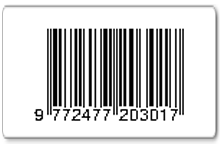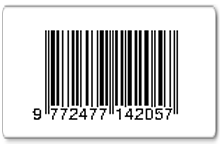Enhancing Physics Engagement Among School Students Through Virtual Laboratory Inquiry
Abstract
Physics is recognized as one of the most difficult topics, which has resulted in a lack of enthusiasm and engagement among secondary students. Therefore, this study aims to (i) identify the difficulties encountered by students in learning Physics, (ii) determine the significant difference in students' performance in Force and Motion in Physics when using virtual laboratories based on gender, and (iii) identify the significant difference in students' performance in Force and Motion in Physics when using a virtual laboratory based on urban and suburban settings. Quasi-experimental research was employed to investigate students' difficulties in Force and Motion, with the research objective being to identify students' perception of computer simulation. The questionnaire was distributed via Google Forms to 40 respondents from secondary school students from Selangor, Malaysia. The findings of this study demonstrated that students encountered the expected problems and provided positive feedback after utilizing the virtual laboratory for learning Physics, indicating the effectiveness of computer simulation in Physics education. The data also revealed that gender did not influence interest in learning Physics, and rural areas showed no significant differences in student performance during the learning sessions. Furthermore, students provided positive feedback and agreed that the virtual laboratory teaching methods offer numerous advantages over traditional methods for teaching and learning Physics.
Keywords
Full Text:
PDFReferences
Acarli DS & Kasap, MY 2022. A study on teacher competencies of pre-service science teachers. Jurnal Penelitian dan Pembelajaran IPA, 8(2). doi:10.30870/jppi.v8i2.15995
Adams WK, Reid S, LeMaster R, McKagan, S. B., Perkins, K. K., Dubson, M., & Wieman, C. E. 2008. A study of educational simulations part I-Engagement and learning. Journal of Interactive Learning Research, 19(3), 397-419.
Adeyemo SA 2010. Teaching/learning physics in Nigerian secondary school: The curriculum transformation, issues, problems and prospects. International Journal of Educational Research and Technology, 1(1), 99-111.
Agboghoroma TE & Oyovwi E 2015. Evaluating effect of students' academic achievement on identified difficult concepts in senior secondary school biology in delta state. Journal of Education and Practice, 6(30), 117-125.
Aina JK & Joseph PY 2013. Harnessing the potential of community resources as an antidote to poor academic performance in physics. IOSR Journal of Research & Method in Education, 3(5), 92-95.
Akhigbe JN & Adeyemi AE 2020. Using gender responsive collaborative learning strategy to improve students’ achievement and attitude towards learning science in virtual and hands-on laboratory environment. Journal of Pedagogical Research, 4(3), 241-261. doi:10.33902/JPR.2021063948
Akinbobola AO 2015. Effects of learning styles and instructional strategies on students’ achievement in Nigerian senior secondary school physics. Advances in Physics Theories and Applications, 41(1), 20-29.
Aykutlu I 2017. An Examination of Pre-Service Primary School Teachers' Comprehension of the Concept of Physics through Metaphors. International Journal of Progressive Education, 13(3), 140-150.
Bayrak C 2008. Effects of computer simulations programs on university students’ achievments in physics. Turkish online journal of distance education, 9(4), 53-62.
Brissel L, Morel L & Dupont L 2013. Contribution to setting up a sustainable learning in an eco-neighborhood development plan based on “Serious game”. Paper presented at the 2013 International Conference on Engineering, Technology and Innovation (ICE) & IEEE International Technology Management Conference. doi: 10.1109/ITMC.2013.7352607.
Dalgarno B, Bishop AG, Adlong W, & Bedgood DR 2009. Effectiveness of a virtual laboratory as a preparatory resource for distance education chemistry students. Computers & Education, 53(3), 853-865. doi:10.1016/j.compedu.2009.05.005.
Deslauriers L, McCarty LS, Miller K, Callaghan K, & Kestin G 2019. Measuring actual learning versus feeling of learning in response to being actively engaged in the classroom. Proceedings of the National Academy of Sciences, 116(39), 19251-19257. doi:10.1073/pnas.1821936116.
Gönen S, Kocakaya S & Inan C 2006. The effect of the computer assisted teaching and 7e model of the constructivist learning methods on the achievements and attitudes of high school students. Turkish Online Journal of Educational Technology-TOJET, 5(4), 82-88.
Henke A & Höttecke D 2015. Physics teachers’ challenges in using history and philosophy of science in teaching. Science & Education, 24, 349-385. doi:10.1007/s11191-014-9737-3.
Herga NR, Čagran B, & Dinevski D 2016. Virtual laboratory in the role of dynamic visualisation for better understanding of chemistry in primary school. Eurasia Journal of Mathematics, Science and Technology Education, 12(3), 593-608. Doi: 10.12973/eurasia.2016.1224a.
Hernández-de-Menéndez M, Vallejo Guevara A & Morales-Menendez R 2019. Virtual reality laboratories: a review of experiences. International Journal on Interactive Design and Manufacturing (IJIDeM), 13, 947-966. doi:10.1007/s12008-019-00558-7.
Kabigting LDC 2021. Computer simulation on teaching and learning of selected topics in physics. European Journal of Interactive Multimedia and Education, 2(2), e02108. doi:10.30935/ejimed/10909.
Knoblauch D & Chase MA 2015. Rural, suburban, and urban schools: The impact of school setting on the efficacy beliefs and attributions of student teachers. Teaching and Teacher Education, 45, 104-114. doi:10.1016/j.tate.2014.10.001.
Kola A & Taiwo A 2013. Analysis of Gender performance in physics in colleges of education: Nigeria. https://ssrn.com/abstract=43610
Koretsky MD, Amatore D, Barnes C & Kimura S 2008. Enhancement of student learning in experimental design using a virtual laboratory. IEEE Transactions on education, 51(1), 76-85. doi:10.1109/TE.2007.906894.
Matthew UO, Kazaure JS & Okafor NU 2021. Contemporary development in E-Learning education, cloud computing technology & internet of things. EAI Endorsed Transactions on Cloud Systems, 7(20), e3-e3. doi:10.4108/eai.31-3-2021.169173.
Md Ahir KN 2008. Kesan pembelajaran berasaskan inkuiri (PBI) melalui web terhadap prestasi dan persepsi pelajar dalam mata pelajaran fizik peringkat university. Universiti Sains Malaysia.
Mengistu A & Kahsay G 2015. The effect of computer simulation used as a teaching aid in students’ understanding in learning the concepts of electric fields and electric forces. Latin-American Journal of Physics Education, 9(2), 3.
Mkpanang JT 2016. Influence of creative style and gender on students' achievement in physics. Journal of Education and Practice, 7(12), 42-46.
Mohidi N 2023. Sikap guru pelatih Fizik terhadap tahap kefahaman dalam daya dan gerakan. https://ir.upsi.edu.my/detailsg.php?det=9782.
Musawi A, Ambusaidi A, Balushi S & Balushi K 2018. The impact of using virtual lab learning experiences on 9th grade students’ achievement and their attitudes towards science and learning by virtual lab. Journal of Turkish science education, 15(2), 13-29.
Nirmala W & Darmawati S 2021. The effectiveness of discovery-based virtual laboratory learning to improve student science process skills. Journal of Education Technology, 5(1), 103-112.
Oladejo MA, Olosunde GR, Ojebisi AO & Isola OM 2011. Instructional materials and students’ academic achievement in physics: Some policy implications. European Journal of Humanities and social sciences, 2(1). doi: 10.12691/education-1-7-2.
Onwioduokit F, Akinbobola A & Udoh M 2008. Sporting equipment and students'academic performance in the concept of projectile in nigerian senior secondary school physics. African Research Review, 2(1), 1-18. doi:10.4314/afrrev.v2i1.41022.
Ringo S, Kuswanto K, Samsudin A & Setiawan A 2021. Rural and urban students’ attitudes toward physics: a comparative study using Rasch analysis. Paper presented at the Journal of Physics: Conference Series. doi:10.1088/1742-6596/1806/1/012009.
Shah Z, Mahmood N & Harrison C 2013. Attitude towards science learning: An exploration of Pakistani students. Journal of Turkish science education, 10(2).
Simamora RM 2020. The challenges of online learning during the COVID-19 pandemic: An essay analysis of performing arts education students. Studies in Learning and Teaching, 1(2), 86-103. doi:10.46627/silet.v1i2.38.
Volkmann MJ, Abell SK & Zgagacz M 2005. The challenges of teaching physics to preservice elementary teachers: Orientations of the professor, teaching assistant, and students. Science education, 89(5), 847-869. doi:10.1002/sce.20077.
Wolf SJ & Fraser BJ 2008. Learning environment, attitudes and achievement among middle-school science students using inquiry-based laboratory activities. Research in science education, 38, 321-341. doi:10.1007/s11165-007-9052-y
Zacharia Z & Barton AC 2004. Urban middle‐school students' attitudes toward a defined science. Science education, 88(2), 197-222. doi:10.1002/sce.10110.
DOI: http://dx.doi.org/10.30870/jppi.v10i1.19931
Refbacks
- There are currently no refbacks.
Copyright (c) 2024 Jurnal Penelitian dan Pembelajaran IPA

This work is licensed under a Creative Commons Attribution 4.0 International License.
Jurnal Penelitian dan Pembelajaran IPA is licensed under a Creative Commons Attribution 4.0 International License
Copyright © 2025 Jurnal Penelitian dan Pembelajaran IPA. All rights reserved.






